
Treatment of papillomavirus is a complicated method to eliminate the symptoms of the infection and its causes by surgical and therapeutic methods. Benign neoplasms - papillomas - can occur in different parts of the body or mucous membranes. Most often, such formations are harmless, but there are situations when their removal is necessary to prevent the degeneration of the formation in the oncological tumor. Therefore, it is very important to treat HPV properly, following all the recommendations of traditional medicine.
Drug therapy
It is not possible to completely cure the papilloma virus in a short time. To solve the problem, it is important to use antiviral and immunomodulatory drugs that prevent the spread of the disease and the malignancy of the established formations. Once diagnosed, the patient is given any medicine in the form of tablets, injections or suppositories.
Papillomavirus drugs include immunostimulants, antivirals, homeopathy, tumor suppressants, and cytotoxic drugs. The first 3 groups of medicines can take different forms (tablets, injections and others) and are used to fight the cause of the disease, while the last 2 groups are used to gradually remove the formations that have formed.
The purpose of the use of immunostimulants is to strengthen and activate the protective functions of the body, to promote the synthesis of antibodies that will fight viruses and infections. If you use immunostimulants in combination with antiviral medicines, the effects of the latter will be many times greater.
How effective the immunomodulators used to treat HPV will depend on the individual reactions of the patient's body and the treatment package they include. But in most cases, with the use of pronounced papillomavirus clinics and immunomodulators, the disease becomes regressive and may even disappear completely.
| Active substance | Pharmaceutical Group |
|---|---|
| Taurine, benzocaine, interferon | Antimicrobial and antiparasitic agents. Antiviral drugs. Interferons |
| Interferons | Antimicrobial and antiparasitic agents. Antiviral drugs. Interferons |
| Echinacea purpurea sula | Medicines that correct immune processes. Drugs that stimulate immune processes |
| Affinity purified antibodies to human gamma interferon | Homeopathic medicine |
| Lyophilized bacterial lysate: Streptococcus pneumoniae, Haemophilus influenzae, Klebsiella pneumoniae, Klebsiella ozaenae, Staphylococcus aureus, Streptococcus viridans, Streptococcus pyogenes, Moraxella catarrh. | Medicines that correct immune processes. Drugs that stimulate immune processes |
| Purified antibodies to human gamma interferon affinity, antibodies to histamine affinity, purified antibodies to CD4 affinity | Antiviral, antihistamine |
| Sodium Deoxyribonuclate | Medicines that correct immune processes. Drugs that stimulate immune processes |
| Human gamma interferon (recombinant) | Antimicrobial and antiparasitic agents. Antiviral drugs. Interferons |
| Mixture of bacterial lysates (Streptococcus pneumoniae, type I + Streptococcus pneumoniae, type II + Streptococcus pneumoniae, type III + Streptococcus pneumoniae, type V + Streptococcus pneumoniae, type VIII + Streptococcus pneumoniae, | Other immunomodulators |
| Oxyethylammonium methylphenoxyacetate | Medicines that correct immune processes. Drugs that stimulate immune processes |
| Inosine Pranobex | Antimicrobial and antiparasitic agents. Antiviral drugs.
Other groups of antiviral drugs |
| Polyoxidonium | Medicines that correct immune processes. Drugs that stimulate immune processes |
| Activated glycyrrhizinic acid | Antimicrobial and antiparasitic agents.
Antiviral drugs. Other groups of antiviral drugs |
Surgical removal of papillomas
Can I use deletion
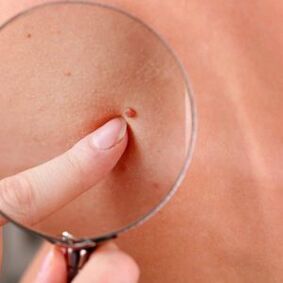
Some papillomas that appear on the body do not cause discomfort to a person, while others can grow, causing both cosmetic defects and physical discomfort. In case of discomfort, it is always removed from the papilloma, but whether it is worth removing the formations, if their appearance does not cause discomfort, you need to understand each case.
Cauterization with liquid nitrogen
Nowadays, the most acceptable way to eliminate papillomas is to burn them with liquid nitrogen or cryodestruction. The technique can be done with hardware using cryopreservation or manually, which is most often practiced in beauty salons.
Special equipment is required to use hardware crystal structure techniques.
Cryodestruction is performed in the following stages:
- In the preparatory phase, in patients with low pain thresholds or large areas of papilloma growth, the nitrogen exposure zone is anesthetized with local anesthetic solutions. In other cases, patients are advised to take any analgesic orally 1 hour before the procedure.
- In the direct freezing or cryodestruction stage, liquid nitrogen is applied to the papilloma area. At the same time, the validity period of 1 point is only a few seconds, so in 5 minutes you can freeze up to 40 papillomas on the body. Before cryodestruction freezes, the patient is warned of possible tingling at the site of nitrogen application.
- In the last stage, the skin treatment area with liquid nitrogen is disinfected with disinfectants.
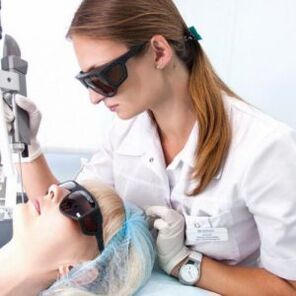
The need for cryodestruction is determined in each case by the attending physician. If the patient is at risk of papilloma degeneration in the malignancy, removal should be performed. Factors influencing the need for cryodestruction are:
- mechanical damage to the neoplasm;
- Decreased patient immunity.
- use of oral contraceptives;
- bad habits of the patient;
- Localization of growths in places that are regularly injured during life.
The main contraindications to the use of cryodestruction method are acute infections in the patient's body, inflammatory processes in the internal organs, atypical types of neoplasms and abnormal cold intolerance. Possible complications after removing warts with liquid nitrogen may include scarring and tissue pigmentation at the cryoprobial application site.
Ointments and lotions
Nowadays, you can buy many special lotions and ointments in pharmacies to remove papillomas on the most delicate areas of the skin.
It is necessary to use ointments for cauterization of education only with complex viral therapy, which should be performed with tablet immunomodulators and antivirals.
Multivitamins, which will improve the state of the immune system and the readiness to produce protective antibodies against the virus, will not interfere in this case.
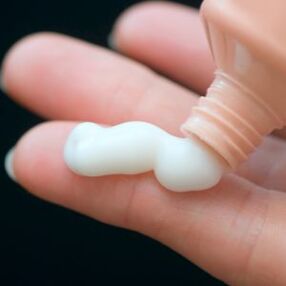
The most available ointment that can defeat papillomas is an ointment containing salicylic acid, which has a keralotic, bactericidal and rejuvenating effect on the affected tissues. The agent is applied to the affected area with a dot without affecting the healthy surrounding tissues that can be used to burn it.
You can also find ready-made solutions for removing papillomas in any pharmacy. With such solutions, it will be necessary to prepare lotions that will lead to the death of the pathogenic microflora in the skin area and eliminate papilloma.
Surgical method
Surgical removal of growths refers to the physical removal of papillomas with a scalpel.
Removal surgeons report if the tumor is more than 3 centimeters in diameter.
When performing manipulations, the surgeon first disinfects the area around the growth and the growth itself with the help of disinfectants, then performs manipulations under local anesthesia and proceeds to direct excision of the neoplasm. After removal of the papilloma, it must be sent for histological examination to determine the oncological nature of its cells. 2 weeks after the operation, the wound under the removed wart has completely contracted and healed.
The main indications for papilloma surgery are:
- large formations, their deep and flat views;
- urgent need to eliminate papilloma;
- malignant form of papilloma;
- Inadmissibility of other methods of non-acceptance.
The main advantages of classic papilloma excision are complete elimination of the problem in one operation, low likelihood of recurrence in this case, safe manipulation, lack of a large list of contraindications to the procedure, and affordable for most patients.
Disadvantages of surgical removal of papillomas include the appearance of a scar at the site of excision and sometimes keloid scarring, long postoperative rehabilitation, abandonment of ultraviolet radiation, and invasiveness of the procedure. Complications of surgery such as redness, itching, scarring at the site of excision, and fever may also be rare.
Laser removal

Modern medical gold standard for the removal of neoplasms depicts laser papilloma removal. Until recently, the removal of papillomas left scars, but today laser technique allows you to maintain the beauty of the skin without visible changes.
The basis of laser papillomotherapy is evaporation, that is, the ability of a beam to cauterize tissues and evaporate life-giving moisture from its surface. The devices allow the duration and intensity of the radiation exposure to the skin to be dosed depending on the type of neoplasm.
The laser removal procedure itself involves several steps:
- The doctor first performs a dermatoscopy and determines the type of laser to be used;
- the site of action is treated with local anesthetics; The
- laser removal session lasts several minutes;
- at the end of the procedure, the application site is disinfected and a sterile bandage is applied if there is a possibility of contact with clothing in the area;
- The patient provides wound rehabilitation care outside the clinic.
After laser papilloma removal, it is forbidden to sunbathe, visit swimming pools and spas, take a bath or use cosmetics in the scar area.
These restrictions are temporary and will be discussed between the specialist and the patient before leaving the hospital.
There are a number of contraindications to laser removal, both relative and absolute, that have been identified in each case. Most often, the technique is not intended for the treatment of diabetes, the presence of herpes, fever, influenza and SARS, diseases of the hematopoietic organs.
Traditional methods
Herbs

From ancient times, healers have eradicated all manifestations of papillomatosis using various herbal infusions. Many recipes have survived to the present day, because their effectiveness and lack of negative effects on the body is amazing.
A popular folk remedy for HPV is wormwood tincture. With its help you can get rid of formations on the entire surface of the body. The most important thing is to know exactly when and how to remove the drug.
Wormwood must be harvested in a certain way. Leaves and flowers are most useful in this hall, but the thick stem is not suitable for tincture. Uncommonly, for medical purposes, wormwood root is recommended to remove from the ground. All harvested parts of the plant are washed and spread out for drying on a flat surface. During drying, the grass must be changed periodically so that it does not dry out. The finished dried grass is stored in a dry glass jar with a tight lid.
Prepared tincture against wormwood papillomas will not only get rid of this problem, but will also eliminate the pathogenic microflora, as well as have a beneficial effect on the human stomach.
The tincture course for papillomatosis is at least 2 weeks, followed by a break in treatment. Each of the possible tinctures is taken orally in 5 drops up to 6 times a day.
Wormwood tincture can be prepared in oil, alcohol or cognac. Oil tincture requires 25 grams of wormwood seeds and 0. 5 glasses of olive oil. The seeds are ground in a coffee grinder and placed in a glass container scalded with boiling water. At the top of the seeds are poured with olive oil, everything is mixed and covered with a tight lid. The mixture is infused for three days in a cool place, filtered and ready to use.
Alcohol tincture is made from 100 grams of wormwood powder, based on blender chopped plant leaves and 0. 5 liters of vodka. Everything is mixed and infused in a glass for 10-14 days, then filtered and used as directed. The tincture should be stored in the refrigerator.
To prepare wormwood tincture on cognac, you will need 50 grams of chopped plant roots and a glass of cognac. The ingredients are mixed and sent to a water bath for evaporation for 30 minutes. The product is then filtered and shipped in the dark for 5 days.
Also, to treat papillomas, you can prepare an infusion of the plant, in which ponytail, lemon balm, dandelion root, plantain and nettle are mixed in equal proportions (1 teaspoon each). The mixture is chopped, and then 3 tablespoons of greens are poured into a liter of boiling water and all boiled for 10 minutes on low heat. After the infusion has been removed from the fire, it should be insisted for several hours.
The finished tincture is used 7 days before eating in a glass. This tool strengthens the immune system, which in turn promotes the self-absorption of papillomas.
Penalty Healing
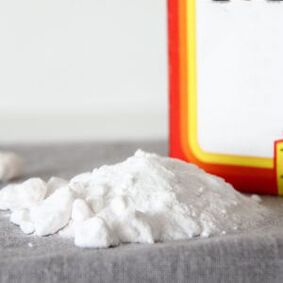
Baking soda has long been used to treat many skin problems at home, including papillomas. Soda is characterized by its ability to alkalize the acidic environment, which provokes the strengthening of immunity, the removal of toxins, creates unfavorable conditions for bacteria and pathogenic microbes. As a result, the viruses stop multiplying in the body and die. The antiseptic and disinfecting effect of soda is also known, which is also useful in the treatment of papillomas. Soda can soften tissues, prevent the symptoms of the virus and its manifestation - education. Soda HPV is used internally, in the form of inhalations and topical lotions.
To prevent malignancies and degeneration of tumors into cancer, some traditional healers recommend drinking a soda solution in milk. It is prepared from 1 cup of warm boiled milk and ¼ teaspoons of baking soda. The solution is applied three times a day, each time the intake of soda increases slightly until its concentration in milk reaches 1 tablespoon. However, drinking milk-soda solution is not allowed for those with gastrointestinal pathologies.
It is best to consult a doctor before using this prescription.
Baking soda inhalations are suitable as a milder immunostimulatory technique. To inhale it is necessary to boil 1 liter of water, add 3 teaspoons of soda to boiling water, stir, lean on the pan, put a towel on your head to prevent steam from escaping, and inhale the soda vapor until the water cools. Inhalations are given several times a day for 5 days.
Laundry Soap
Laundry soap acts on the skin in the form of drying - it removes moisture from them, leads to cell drying and gradual death. This property is very useful in removing papillomas at home. There is moisture inside the neoplasm of the cells that promotes its life, and if it stops flowing, the wart will dry out and disappear.
The most common treatment for papillomas with laundry soap is night use in the neoplasm. After taking a bath, the papilloma area is moistened and abundantly rubbed with laundry soap without damaging the buildup.
After applying a thick layer of soap, you have to wait for them to dry and you can go to bed. In the morning the soap is washed with clean water, and in the evening the procedure is repeated.
Specifics of treatment for women
Internal and external genital lesions

In modern medicine, papillomatosis therapy for women is performed by various methods, but it is still not possible to completely remove HPV from the body. Therefore, any treatment is aimed at the individual elimination of clinical signs of the disease.
There are many similarities in the treatment of HPV in female and external genitalia. The only difference is that when detecting neoplasms on the external genitals, specialists can prescribe immunomodulatory agents in one direction, and HPV internal genitals (mucous membranes) use stronger drugs that prevent the development of oncopathology.
Treatment of genital papillomatosis in women can be performed using destructive and therapeutic methods. The required method must be chosen by a specialist in each specific case.
Intraductal papillomas
Because experts classify intraductal papillomas as precancerous diseases of the mammary glands, their treatment is limited to the use of surgical techniques. In papillary cystadenoma, surgeons perform resection of mammary gland sectors while removing tissue with modified channels. This operation is performed with a periareolar incision, which in the future allows to maintain both the shape and size of the mammary gland without the use of mammoplasty.
If a woman is diagnosed with intraductal papillary cancer, radical mastectomy is used as a treatment.
To prevent oncology of the mammary gland, doctors recommend regular mammological examinations, early treatment of mastopathy, and special attention to dishormonal and inflammatory pathologies in the female genital area.
Treatment for men
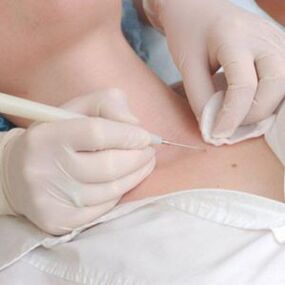
Treatment of HPV with male genital manifestations is performed with medication and surgery. Drug therapy in this case is intended to suppress the virus, administer it in an anabiotic state and help strengthen the immune system.
Even small male genital papillomas do not go away on their own, so it is common to remove them surgically:
- with electrocoagulation using electric current;
- freezing with liquid nitrogen - cryodestruction;
- using a laser;
- by radiosurgery - a non-contact method based on exposure to radio waves of a certain frequency;
- by cauterization method with special chemical solutions;
- normal surgical excision with a scalpel;
- using ointments that can remove buildup.
The method of removing papillomas on the male genitals is chosen individually, depending on the characteristics of the course of the infection. Doctors recognize all of the above methods of destruction as reliable and can be performed without the use of general anesthesia.
What to do if the papilloma is damaged
In case of damage to the surface of the papilloma, an inflammatory process may begin in the affected tissues. Externally, it will manifest as a buildup of discoloration, swelling, redness, burning and itching. From the wound begins to flow ichors, mixed with pus or serous fluid with an unpleasant odor. If the immune status is satisfactory, the tear site will soon dry out and no abnormalities will be seen. However, otherwise there is a risk of malignancy.
Severe trauma (burns, scratches, abrasions) can lead to the spread of HPV to adjacent tissues and the growth of new formations. Such a process is even more prone to oncological degeneration.
If the papilloma is still injured, a sterile bandage or cotton swab pre-moistened with 3% hydrogen peroxide should be applied quickly and maintained for at least 10-15 minutes. After stopping the blood, the wound is treated with alcohol to disinfect the surface of the skin and prevent infections and fungi from entering the wound. In the absence of alcohol, disinfection is performed using iodine or brilliant green, although these products will interfere with monitoring the condition of the wound in the future.
In case of significant bleeding due to papilloma damage, angioma trauma - a benign vascular proliferation - is diagnosed. Angioma lesions are not dangerous, oncology does not develop as a result of such pathology.
Where to go in case of illness
If you find different formations on your skin in the first stage, you should see a dermatologist. This doctor will make the necessary diagnoses, determine the type of virus and determine the patient's next steps.
Most dermatologists believe that the earlier the papilloma is removed, the lower the risk of dangerous consequences, but everything is individual. The dermatologist will tell the patient which specialist will need to perform the removal and which technique is best to prefer in this particular case. Your doctor will also determine the next treatment plan, after which it will be possible to go to a surgeon.
If you develop papillomas in the genital area, you should seek the advice of a dermatovenerologist. If the formations are localized in the anal area, the proctologist will treat such pathology. In case of papillomas on ENT organs or oral mucosa, the patient is referred to an otolaryngologist. Male genital papillomas are treated by a urologist or dermatovenerologist, and in women they are treated by a gynecologist.
















































































